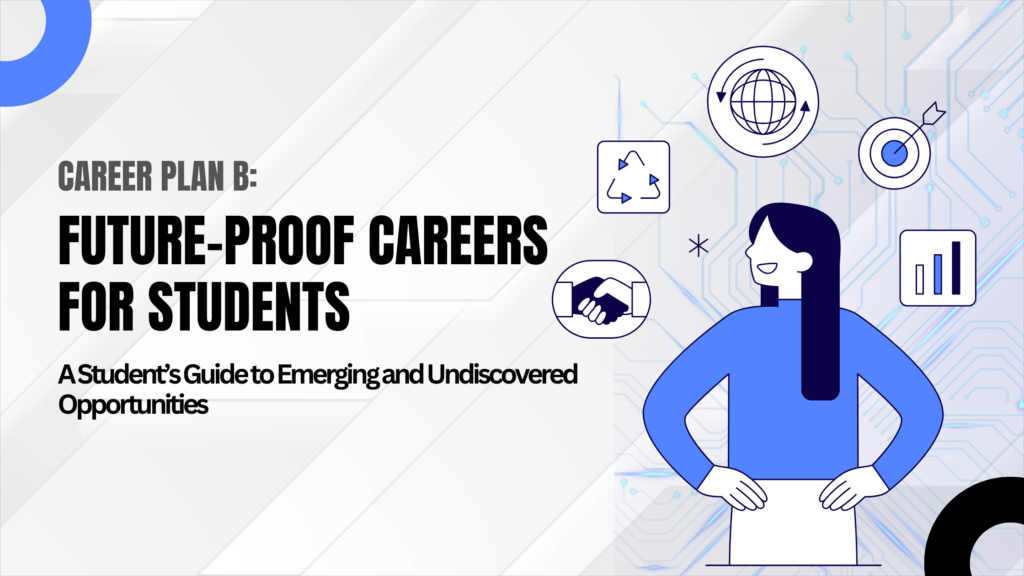The Ultimate Career Guide: Aligning Passion, Skills, and Market Demand
Choosing a career path is a significant life decision that shapes one’s future. Studies reveal that 52% of working professionals regret their career choices (CNBC, 2023). To avoid such outcomes, students must adopt a structured approach to identify their strengths, explore opportunities, and align their ambitions with market demands.
Step 1: Conduct a Comprehensive Self-Assessment
Understand Your Strengths and Weaknesses
Begin by evaluating your natural abilities. Are you good at logical reasoning, or do you excel in creative pursuits? Tools like Gallup CliftonStrengths or MBTI (Myers-Briggs Type Indicator) can offer valuable insights.
- Example: If analytical thinking is your strength, consider careers in data analysis or engineering.
- Tip: Maintain a journal to note feedback from peers, teachers, and mentors about your skills.
Discover Your Passions
Your interests should complement your skills. If you’re drawn to environmental issues, roles in sustainability or renewable energy could align with your values. However, ensure your passion has practical career applications.
- Stat: 70% of individuals who pursue careers aligning with their interests report higher job satisfaction (LinkedIn, 2024).
Step 2: Research Career Trends and Opportunities
Explore Emerging Fields
The job market is constantly evolving, with new careers emerging due to advancements in technology and societal shifts.
- AI and Machine Learning: With AI projected to contribute $15.7 trillion to the global economy by 2030, opportunities in roles like AI specialists and robotic engineers are growing exponentially (PwC).
- Sustainability Careers: The green economy has created positions like carbon footprint analysts and energy efficiency consultants.
- Healthcare Tech: Jobs in telemedicine and healthcare app development are booming, thanks to a 55% rise in digital healthcare adoption post-COVID (Statista, 2023).
Investigate Regional Opportunities
Different regions have specialized industries. For instance:
- India: IT and software in Bangalore.
- US: Biotechnology in Boston.
- Japan: Robotics and automation.
Local trends can influence job availability and salaries, so research accordingly.
Step 3: Align Education with Career Goals
Choose the Right Courses
Identify academic pathways that complement your career choice. For instance, if you aim to become a financial analyst, opt for a degree in finance or economics supplemented with certifications like CFA.
Focus on Future-Proof Skills
The World Economic Forum predicts that 65% of today’s students will work in jobs that don’t yet exist. Skills like critical thinking, adaptability, and digital literacy will remain essential.

Step 4: Gain Practical Exposure
Internships and Apprenticeships
Hands-on experience bridges the gap between theory and practice. Internships can clarify whether a career suits you.
- Example: If you’re interested in journalism, intern at a media house to learn the ropes.
- Stat: 85% of employers prefer candidates with internship experience (NACE, 2023).
Part-Time Jobs
Freelancing or part-time roles help you develop industry-specific skills while expanding your professional network. Platforms like Upwork or Fiverr allow students to explore diverse fields.
Step 5: Explore Unique Career Paths
Under-the-Radar Opportunities
- Food Technologist: Innovate sustainable food solutions.
- Space Architect: Design habitats for extraterrestrial colonization.
- Esports Strategist: Manage teams in competitive gaming, a field expected to surpass $3 billion by 2026.
The Power of Niche Fields
Choosing a less saturated career path can reduce competition and open unique opportunities. For instance, ethical hacking is not only lucrative but essential in a digital-first world.
Step 6: Make a Plan and Reassess
Set Achievable Milestones
Break your career plan into actionable steps.
- Short-Term Goal: Obtain a certification in digital marketing within six months.
- Mid-Term Goal: Secure an entry-level job or internship.
- Long-Term Goal: Transition into a managerial role within five years.
Evaluate Progress Regularly
Conduct self-reviews every 6–12 months to reassess your goals and adapt to new opportunities or challenges.
FAQs
1. How Do Psychometric Tests Help in Career Selection?
Psychometric assessments like Holland Codes or Big Five Personality Test measure interests, personality traits, and aptitudes, guiding students toward suitable careers.
2. What Are Some In-Demand Careers in 2024?
AI specialists, UX designers, renewable energy consultants, and genomic counselors are among the most sought-after roles.
3. How Can I Manage Family Expectations About My Career Choice?
Present a data-backed plan. Show the earning potential, career stability, and your passion for the chosen field. Open communication is key.
4. Are There Scholarships for Non-Traditional Careers?
Yes, programs like the Google Scholarships for tech enthusiasts or Fulbright Scholarships for arts and humanities support unique career paths.
5. What If My First Career Choice Fails?
Career paths are rarely linear. Use transferable skills to pivot into related fields. Lifelong learning ensures adaptability.
Final Thoughts
Choosing the right career path is not just about securing a job—it’s about building a fulfilling life. By combining self-awareness, research, and practical exposure, students can make informed decisions. Remember, the key is to remain flexible and proactive in adapting to market changes.



